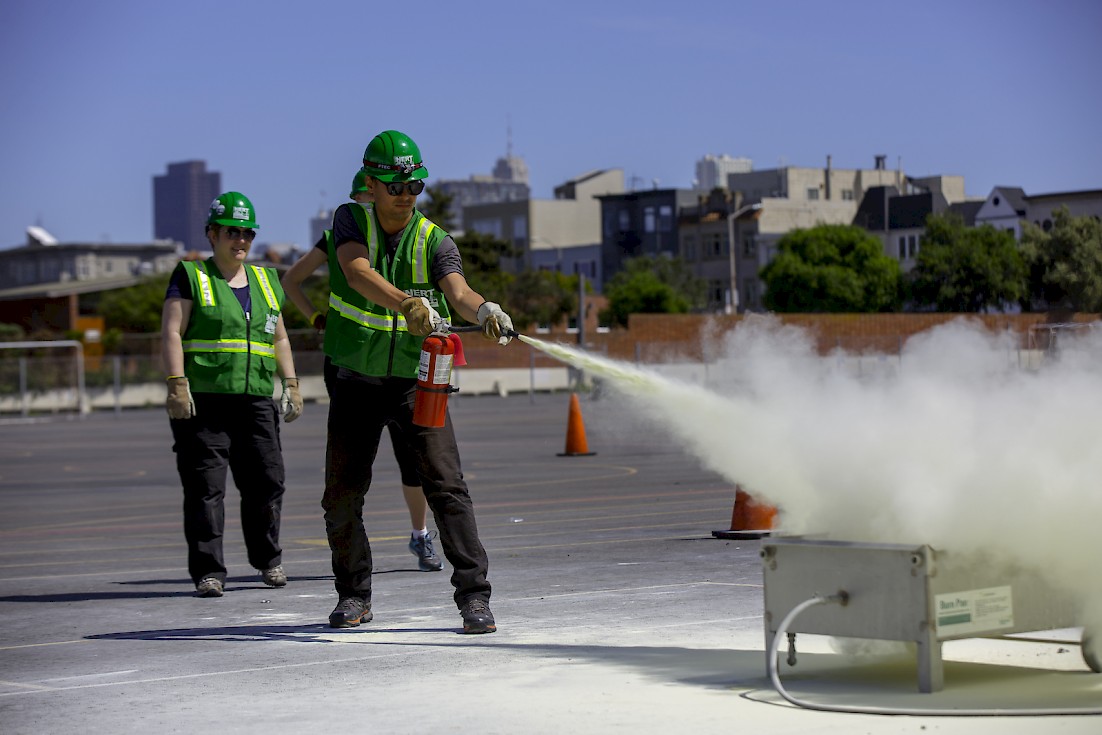On an August night in 2005, a concerned neighbor woke political science teacher and author Daniel Aldrich and warned him to flee with his wife and children as Hurricane Katrina approached. Aldrich, who attributes his family’s survival to his New Orleans neighbor, was profoundly impacted by this experience. He began researching how people help each other in disasters and spent years studying organic responses in different countries. Now the director of the Resilience and Security Studies program at Northeastern University, Aldrich is convinced that communities “are the sum of their relationships” and neighbors are the “key to survival.”
Observing the contributions of non-professional responders in Japan, Aldrich concluded in 2011 that “it is the personal ties among members of a community that determine survival during a disaster, and recovery in its aftermath.” The Japanese model would play a critical role in the development of Community Emergency Response Teams (CERTs) in the United States.
Assistant Fire Chief Frank Borden of the Los Angeles Fire Department (LAFD) shared a similar interest in disaster response as Aldrich. In 1985, Borden accompanied an American delegation to Japan to study earthquake preparedness. He was struck by the willingness of ordinary citizens to train so they could help rescue others. He was convinced that vulnerable Los Angeles, California, would benefit from a similar proactive culture. Before he could solidify his plans, Mexico City tragically experienced an 8.1-magnitude earthquake. Without formal training, 100 rescuers lost their lives. Borden traveled to the disaster zone to learn what basic training might have saved their lives.
In 1986, the LAFD launched the first training programs Borden and his colleagues developed – the Community Emergency Response Teams (CERT). Their success encouraged other cities to implement similar CERT initiatives.
Building a Culture of Self-Reliance
CERT’s primary objective was to promote neighborhood preparedness that would “enhance the ability of individuals and communities to reduce their emergency needs and to manage their existing resources until professional assistance becomes available.” The CERT program:
[E]ducates volunteers about disaster preparedness for the hazards that may impact their area and trains them in basic disaster response skills, such as fire safety, light search and rescue, team organization, and disaster medical operations.
Borden stated in a 2020 interview that, in 1991, when FEMA was looking at community preparedness programs in the country, they decided Los Angeles had the best. They wanted to expand it across the United States. It became more imperative to combine the state CERT programs into something cohesive, to instill very strict guidelines. The future of CERT revolves around cohesiveness.
The guidelines of the new citizen training program would include unified training and credentialing. It would allow professional agencies, even those from different states, to:
Predict CERT response procedures across jurisdictions,
Interact with CERT teams during multi-agency responses,
Efficiently communicate with team members, and
Classify volunteer activity for cost-recovery grants.
A unified and systematic organization would best serve the 600,000 CERT volunteers, section chiefs, and team leaders nationwide by:
Codifying CERT mission, goals, and best practices;
Standardizing certification requirements; and
Ensuring compliance with national procedures.
Verified Digital Credentials: Supporting a FEMA Partnership
In August 2021, FEMA released its National Resource Typing for the Community Emergency Response Team (CERT) program, setting the national credentialing standard. To reach a FEMA credentialing level, an individual needs to achieve specific training and experience metrics. However, the challenge was in how FEMA CERT credentials would be issued to every eligible member.
To address this challenge, the National CERT Association (NCA) partnered with Merit, a digital platform that enables the organization to issue verified digital credentials to individuals. As a result, CERT members now receive and keep digital certifications once they have completed the required training and tests. The credentials can be trusted by emergency services agencies at every level because they are issued directly by the NCA and only to qualified volunteers.
A new digital solution is closing the credentialing gap between citizen responders and emergency services agencies to enhance whole-community resilience.
One example of facilitated certification is that thousands of individuals who took the online/hybrid CERT training courses offered through the University of Utah obtained official digital credentials on Merit recognized by NCA. The certifications enable the university to communicate directly with graduates and share opportunities for more classes and training for which they qualify. Interested individuals may begin the online portion of the training at any time and see resources on where to complete the in-person training.
These and all NCA credentials are fully compliant with Systems and Organization Controls (SOC) and the Health Insurance Portability and Accountability Act (HIPAA) security requirements and integrated with FEMA’s National Response Framework and National Qualification System. The credentials facilitate creating effective communication networks and sharing member status with CERT chiefs, leaders, and offices of emergency managers.
CERT members can also obtain digital proof of specific, in-demand capabilities, such as responding to certain emergencies, speaking multiple languages, or having expertise in connecting with vulnerable populations. Interoperable platforms for digital credentials enable organizations and agencies to easily share information for disaster planning and rapid response during actual crises. They can be accessed by legacy systems, which provide economy to agencies and non-profit organizations for which budgeting is often an obstacle to innovation.
The brutal lessons of catastrophic earthquakes inspired the original CERT founders to train courageous people to safely help others survive. Today’s CERT programs deploy verified, skilled, and credentialed volunteers. Agile, real-time digital solutions are enhancing whole-community resilience.

Patty Ridings
Patty Ridings is currently the public information officer for the National CERT Association (NCA). She also is the community impact officer for Covenant Solar & Roofing. In addition to that role, she is active in the community and volunteers with approximately 38 non-profit organizations. She serves as a board member for Family Harvest Church and Succor Humanitarian and is part of the International Association of Women (IAW) National Diversity, Equity, and Inclusion Council. She also serves as the community engagement and philanthropic coordinator for the Orland Park IAW leadership team. For three years, she served as the president of the Tinley Park Citizens Police Academy Alumni Association (TPCPAAA) and a board member of the Tinley Park Chamber of Commerce. She continues to serve veteran’s organizations, including The National Women Veteran United (NWVU), by bringing awareness of women’s issues in the military.
-
Patty Ridingshttps://www.domesticpreparedness.com/author/patty-ridings






